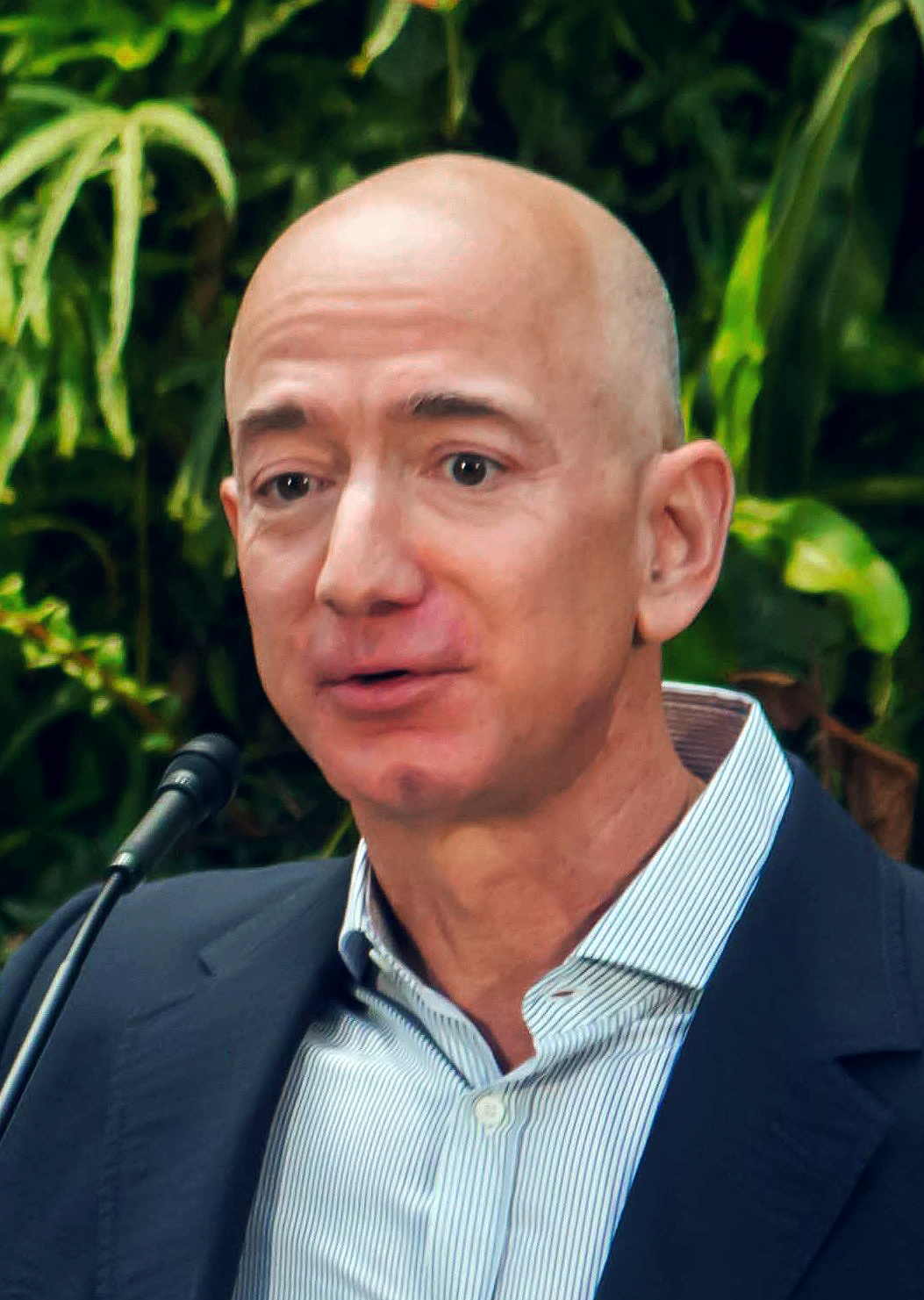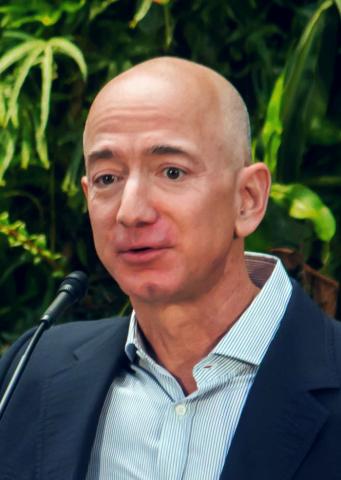Trust the New York Times to go gaga over bad ideas concerning antitrust law. This past week, the front page of the print version of its business section featured an article entitled, “Be Afraid, Jeff Bezos, Be Very Afraid.” The drumbeat continued with the online version, entitled “Amazon’s Antitrust Antagonist Has a Breakthrough Idea.” Its author, the journalist David Streitfeld, profiles Lina Khan, a recent Yale Law School graduate, in his lead article. Khan, he claims, “has reframed decades of monopoly law” with a student note published in the Yale Law Journal entitled “Amazon’s Antitrust Paradox.” Khan thinks Amazon should be broken up because its large size and pervasive reach allows it to extend its tentacles into too many markets at the same time.
The title of Khan’s note is intended to be an attack on the late Robert Bork’s influential 1977 book, The Antitrust Paradox: A Policy at War with Itself. Bork’s Chicago-school critique of antitrust law was largely directed to what he called the “reckless and primitive egalitarianism” of Chief Justice Earl Warren’s Supreme Court, which sat from 1954 to 1969 and wrought havoc over many fields of legal study, antitrust included. On antitrust, the Warren Court often held that mergers that resulted in virtually no increase of market power could be enjoined by the government, even though they had no adverse affect on either the price or quantity of goods sold. In so doing, the Court deviated from the original antitrust design which was intended to supplement state law, as argued in another Yale law student note, in dealing with large combinations—the so-called trusts—that did exert enormous market power.
In his book, Bork urged his readers to forget the razzle-dazzle of the multi-dimensional sociological arguments the Warren Court often relied upon. In Bork’s view, the sole objective of antitrust law “is the maximization of consumer welfare,” a test which, when rigorously applied, “provides a common denominator by which gains in the destruction of monopoly power can be estimated against the loss in efficiency.” Why he thought that his book exposed a “paradox” is, well, paradoxical. Bork’s complaint is quite simply that early antitrust law constituted “a system of vigorous enforcement coupled with internal contradiction and intellectual decadence.” Bork wanted antitrust enforcers to narrow their focus so as to avoid administratively wasteful and economically inefficient enforcement escapades, which, as he acknowledges, thankfully abated after 1970.
Notwithstanding his fiery rhetoric, Bork’s consumer welfare test does not allow for unbridled libertarian individualism whereby any business can adopt any business strategy it wants so long as it does not engage in the use of force and fraud against other parties. Rather, it takes very seriously the risk that a monopolist—or worse, a group of firms working as a cartel to divide a market by territory or product line—can produce immediate and perhaps even long-term losses in social welfare. This is because the monopolist’s gains come not from increased productivity, but from raising prices above their competitive level, thereby shutting out some consumers. The gains to the monopolist from fewer but more profitable transactions are less than the loss to consumers as a group—hence the overall social losses. Bork wanted to use antitrust law to prevent any deviation from competitive equilibria. And in order to make good on that promise he insists that no judge—and by implication, legislator—should “weigh against consumer welfare any other goal, such as the supposed social benefits of preserving small businesses against superior efficiency.”
The basic soundness of Bork’s position becomes only more evident by examining Khan’s purported exposé of the Chicago position. Her central premise is that there is more to the social world than the combination of price and quality in the goods sold in the marketplace: “The structure and dynamics of markets,” she writes, matter as well. But how? To Khan, soft values, like the virtues of small businesses and coherent social communities, should be accounted for in framing the rules of antitrust law. Once that is done, she concludes that Amazon’s behemoth retail enterprise should be placed on the antitrust chopping block because the success of the company has undone many small businesses and the communities that rely upon them for economic vitality and local solidarity.
Unfortunately, her “breakthrough” insights are just old wine in new bottles. Her case amounts to a rehash of a misguided antitrust ethos that prevailed from the height of the New Deal to the end of the Warren Court. In 1936, the passage of the Robinson-Patman Act was designed to protect small local businesses from large “chains,” like the once-dominant but now-defunct supermarket company Great Atlantic & Pacific Tea Company, which offered a wider range of goods at lower prices than their local rivals. In addition, early antitrust law backed Khan’s view of condemning the practice of “predation,” whereby a firm sells its products today at a price, in the extreme case, below its marginal cost of production in the hope of recouping those losses down the road once market dominance is achieved.
To Khan, Amazon’s remarkable success is—and here there is a clear paradox—the best reason for federal trust-busters to punish the firm’s discriminatory pricing and predatory behavior. Thus she suggests that Amazon should be treated as though all its multifaceted businesses were public utilities, like the local gas and electric companies whose rates can be closely regulated, and whose operations might well be broken into smaller units, each of which is subject to regulation under general antidiscrimination norms.
But why? It is not because any of these units has a demonstrated monopolistic market power in its own niche, let alone power acquired by illicit means. Amazon succeeded through pluck and imagination—attributes that deserve praise, not condemnation. Khan’s description of Amazon’s rapid rise to market dominance reads like the citation for a Congressional Gold Medal. For three years running, consumers have rated Amazon as the “most reputable company in America.” Its aggressive treatment of and astute relationships with its various suppliers has let it provide high-quality goods at low prices to its millions of online and brick-and-mortar shoppers.
Yet Amazon does not reap the high rates of return on investment suggestive of monopoly power. Its success generates enormous social gains. Why would anyone want to prevent a rejuvenated Whole Foods from moving into the neighborhood? Amazon stores can hire squads of new workers, promote civic activities, and become anchor tenants in shopping malls, thereby attracting traffic that allows smaller specialty shops to thrive. And for many elderly and disabled people, the convenience of online shopping for a variety of goods is a veritable god-send. Happily, as the Times reports, retailers can, should, and do imitate many of Amazon’s successful innovations.
To see the emptiness of Khan’s position, just look at one case that Khan cites with approval, but which was the object of scorn for both Bork and his frequent coauthor, close colleague, and my teacher in the 1960s, Professor Ward Bowman. In Utah Pie Co. v. Continental Baking Company (1967), Justice Byron White castigated the large new entrants into the Utah pie market for contributing to a “deteriorating price structure” by selling their pies for prices that bested the local competition. At the same time, they sold the same pies at higher prices in their original markets, even though their local costs of transportation there were lower. White’s use of the term “deteriorating” is loaded, for the better explanation was that Utah Pie had enjoyed something of a local monopoly before the out-of-state competitors began to nibble. The price inversion may well indicate that these companies had some monopoly power elsewhere, but that was hardly a reason to protect Utah Pie in its home court. It was rather a reason to encourage wider entry in those original markets as well. But it is a gross mistake to conflate the protection of particular competitors with the protection of the overall competitive process in these cases. Bork and Bowman surely have the better of the argument, which by 1986 became settled law when the Supreme Court held in Matsushita Electric Industrial Co. v Zenith Radio Corp that these predation complaints could be brought only in rare cases.
Ironically, the predation cases are also irrelevant because as Khan acknowledges, Amazon is able to cover the cost of its “loss leading” products by luring customers to the site where they will then buy other goods for full price. The recoupment issue just doesn’t arise: since there is no loss today, we need not worry about recoupment tomorrow. But even if other sales failed to cover costs today, why worry? Amazon’s lower prices would draw in huge numbers of new buyers who would have to be served at a loss, even if, as is common, its unit prices start to rise. Yet afterwards, competitors that sat on the sidelines during the predatory period can jump back into the market and undersell the weakened predator. The foolishness of the predatory pricing strategy explains why Amazon, which is looking for sustainable growth, would never attempt it. And Khan is simply wrong to suggest that a crafty Amazon could recoup its losses elsewhere. After all, why not collect those extra revenues today if there is no long-term reason to forego them?
In the end Khan, like so many others, cannot find any serious systematic loss from strong competition. Against that background, her remedial proposals are highly expensive, wickedly counterproductive, and socially perverse. After all, the object of rate regulation is to lower prices to competitive levels. But her social values theory requires them to be forced higher. It is hard enough to regulate homogenous goods like gas and electricity. It is literally impossible for regulators to set prices sensibly for thousands upon thousands of goods whose composition varies quickly and unpredictably over time. Amazon has no fixed plant whose costs have to be recovered from its rate base. No regulator can even guess at the correct prices, be they higher or lower, of everything from diapers to doorknobs. It is much easier to prevent a merger than it is to break up an existing firm that runs with exquisite efficiency. Khan’s naïve proposals may earn the misplaced plaudits of the New York Times. But they should be emphatically rejected by everyone else.
















